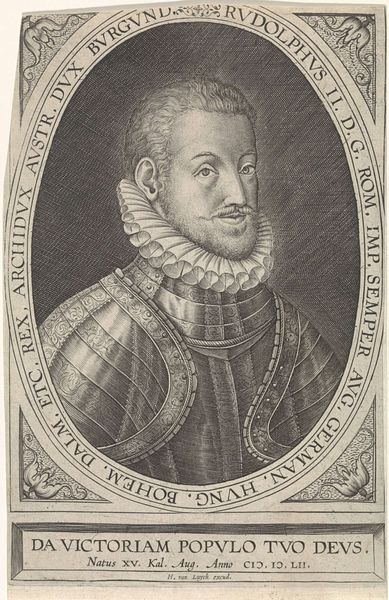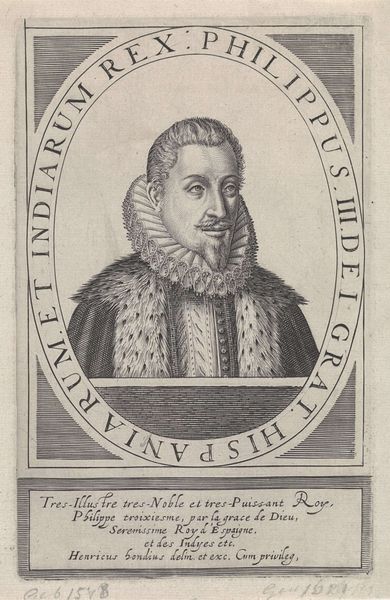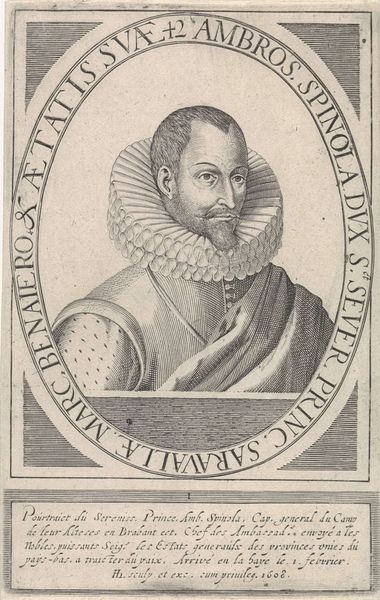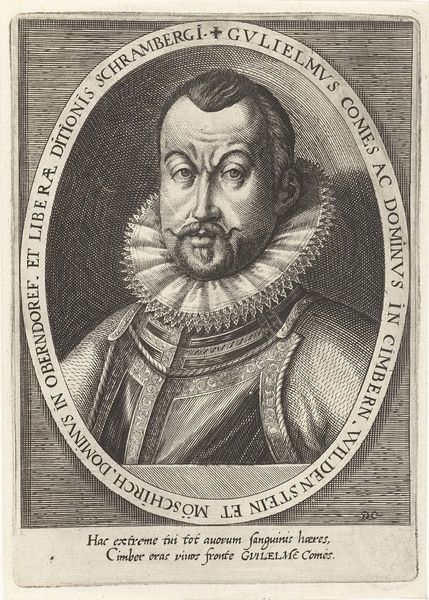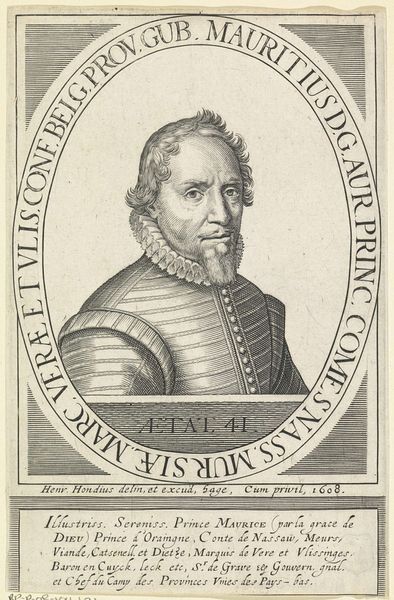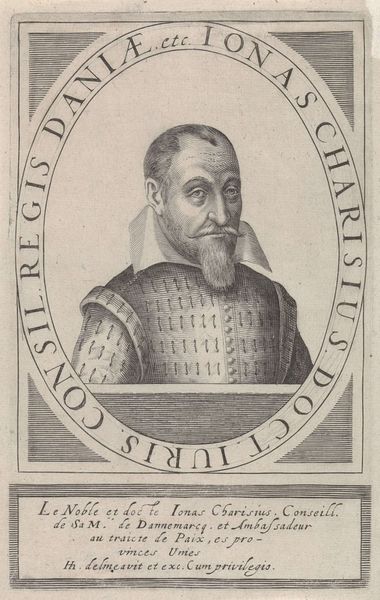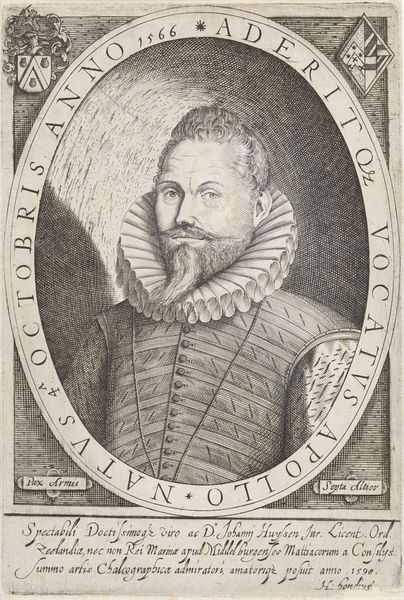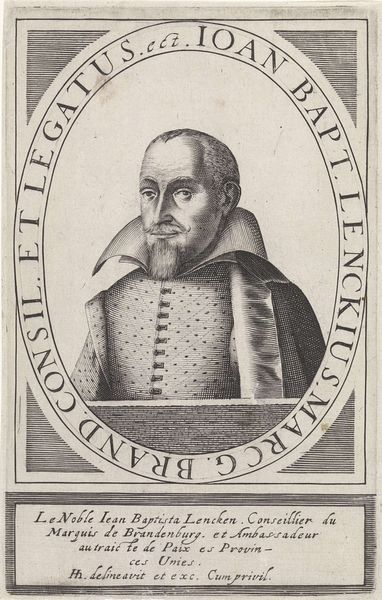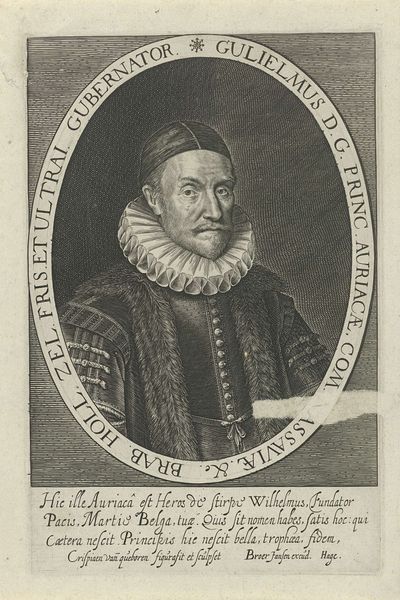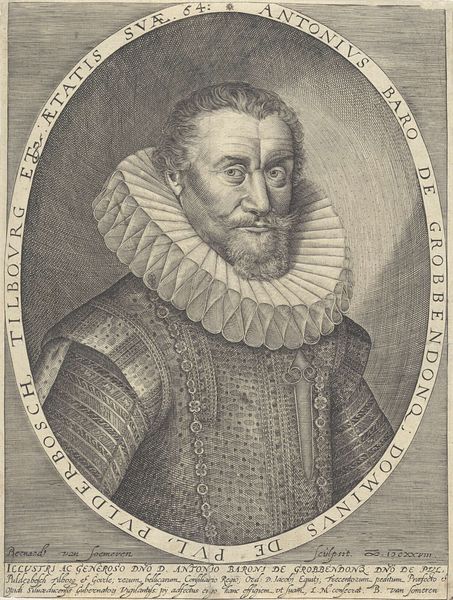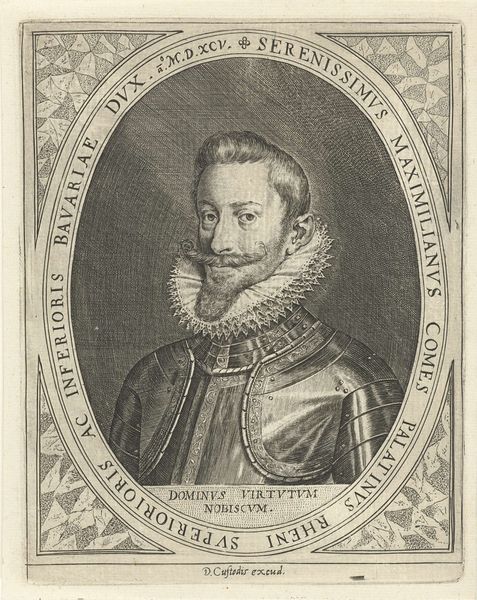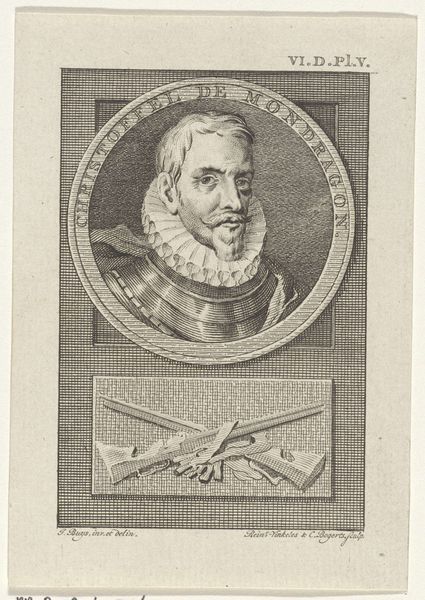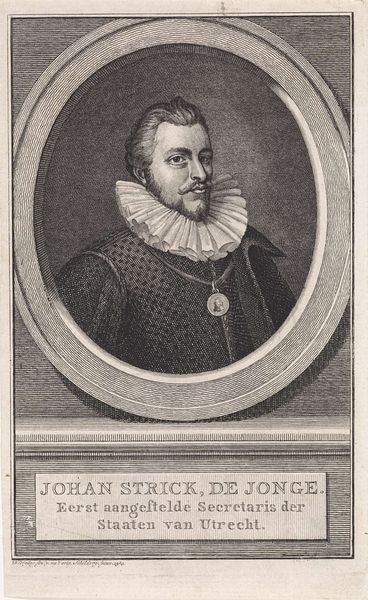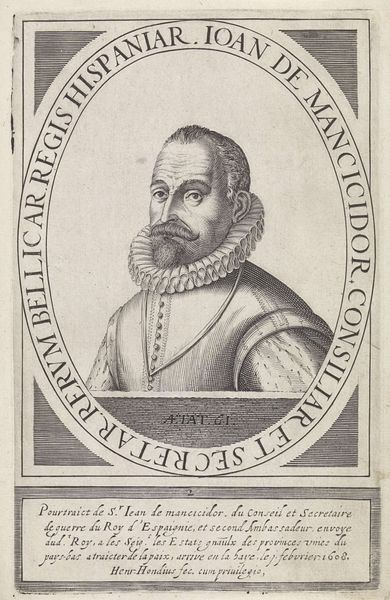
print, metal, etching, engraving
#
portrait
#
baroque
# print
#
metal
#
etching
#
engraving
Dimensions: height 188 mm, width 120 mm
Copyright: Rijks Museum: Open Domain
Curator: Isn’t it fascinating how faces from centuries ago can still look at us with such... intensity? Editor: Oh, absolutely! This engraving, "Portret van Albrecht, aartshertog van Oostenrijk," made in 1608 by Hendrick Hondius I, just emanates that sense of early Baroque authority. I’m struck by how crisp and assertive he looks despite being rendered in these fine lines. Curator: Indeed. It’s intriguing to see Albrecht portrayed through such careful detail—that elaborate ruff collar around his neck seems almost a character in itself, doesn’t it? Almost like armor, visually isolating him from those around him. Editor: Precisely! The ruff is this powerful visual boundary, indicating status, yes, but also perhaps a kind of separation from the messiness of the world. But note how it's created from these rhythmic, almost radial patterns; the details pull you in. Curator: You know, knowing it's an engraving gives me a sense of its intended distribution. How images of powerful rulers could disseminate through print—almost like early propaganda. Editor: Without question. Print culture democratized imagery to an extent, although, of course, access still depended on wealth and literacy. Albrecht as Archduke was projecting power through carefully managed visual statements. Curator: What do you make of the inscription circling his portrait? All those titles and regions he ruled...it's a symphony of power. Editor: Ah, those strings of titles aren't just empty pronouncements; they speak to a complex network of alliances, territories claimed and governed. It creates this mental map of his influence in Europe, anchored in his very being. You could almost meditate on all that text. Curator: So, for you, the artwork reveals more than just Albrecht's physical appearance. It’s a symbolic representation of his era’s power structures. Editor: Yes, seeing this portrait reminds us that even portraits function as coded expressions—each element contributes to the story that the artist intended to convey, far beyond simply capturing a likeness. It feels like it almost transcends that period too, how images create influence, the same as today! Curator: I think I see the ruff in a whole new way, with all this in mind. It’s not just a flamboyant accessory. It is a barrier but also this point of meditative detail, simultaneously a symbol of both power and separation. Thank you for enlightening me!
Comments
No comments
Be the first to comment and join the conversation on the ultimate creative platform.
